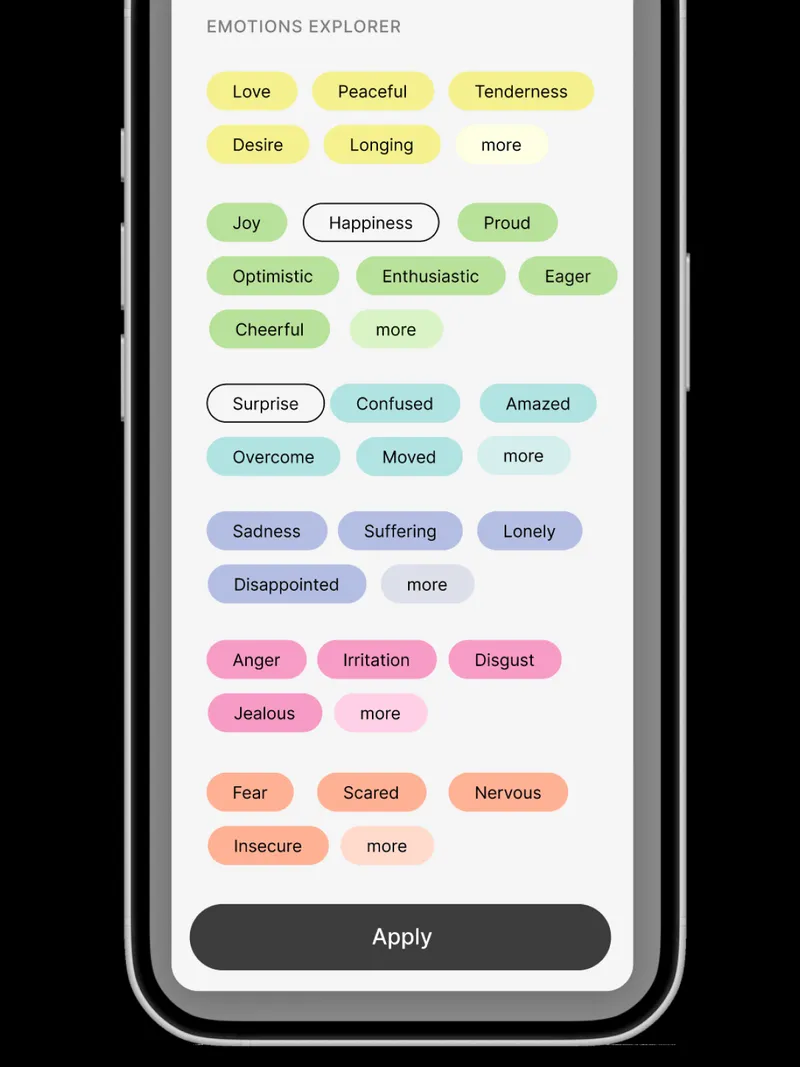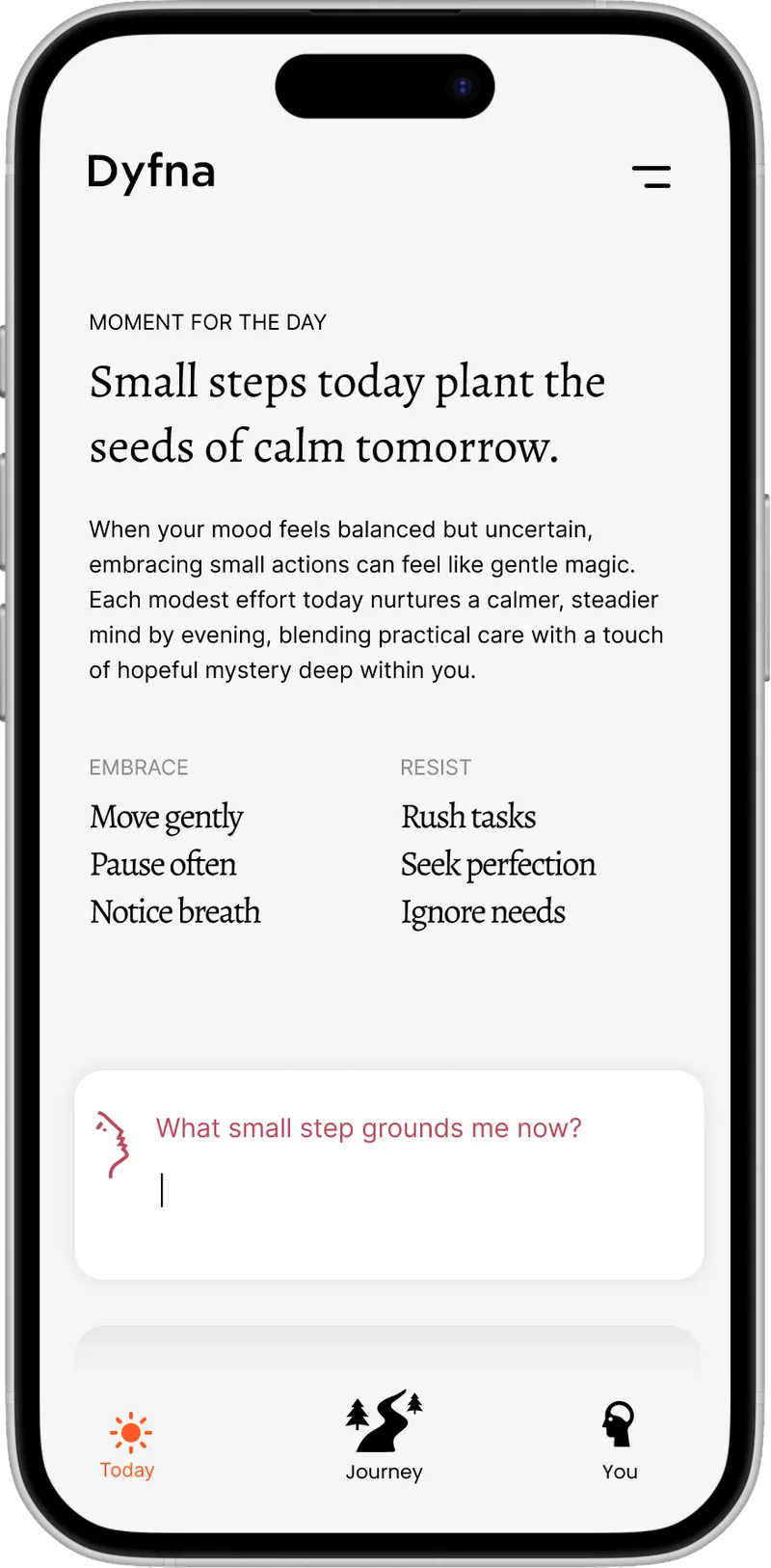Emotional Journaling: How to Process and Understand Your Emotions

Emotional journaling is more than putting feelings on paper—it’s a powerful pathway to clarity, self-awareness, and resilience. With the help of an innovative mood tracker and an emotions explorer, where emotions are beautifully grouped by color, it becomes easier to identify, explore, and learn from what you feel.
In this guide, you’ll learn how to use emotional journaling—enhanced by a structured, color-based approach—to process emotions, uncover patterns, and deepen your self-understanding.
Understanding the Complexity of Emotions
Emotions are rarely simple. They don’t usually arrive as neat, single-label feelings.
Instead, they can be layered, conflicting, and shaped by our personal history and cultural expectations.
This complexity makes emotional self-awareness challenging.
Common obstacles include:
- Mixed emotions – Feeling both joy and sadness about the same event.
- Subjectivity – What feels like anger to one person might be disappointment to another.
- Social conditioning – Cultural norms may encourage hiding or minimizing certain feelings.
An emotions explorer turns this complexity into clarity by mapping feelings into color-coded clusters.
This visual approach helps you notice subtle shifts, spot overlaps, and expand your emotional vocabulary.
Why Emotional Journaling Works (and How Tools Can Enhance It)
Journaling is a powerful self-reflection tool—it helps you:
- Make sense of your feelings
- Spot emotional triggers
- Understand the roots of your reactions
- Choose more thoughtful responses
A mood tracker adds a new layer:
you’re not just writing about emotions—you’re seeing them evolve over time.
Patterns in color-coded trends reveal how moods connect to events, habits, and environments.
With the right tools, you can expect:
- Lower stress and anxiety
- Sharper self-awareness
- Better emotional regulation
- More stable moods
- Less overthinking
- Greater resilience
- Discovery of hidden emotional patterns
5 steps for Good Emotional Journaling
- Find a safe space – Deep reflection thrives without distractions.
- Write for 15–20 minutes – Or start with just 5 minutes if you’re easing in.
- Don’t censor yourself – Let joy, grief, anger, or excitement flow without editing.
- Use prompts when stuck – Use thought-starters to unlock new insights.
- Build a habit – Consistency matters more than perfect timing.
Journal Prompts to Explore Your Emotional World
- What emotion is most present right now?
- Where do I feel it in my body?
- What triggered it?
- How am I responding?
- What lesson is hidden in this emotion?
- Which emotions do I tend to avoid? Why?
- How did I handle difficult feelings today?
- How can I respond better next time?
Pair your answers with visual mood data—giving you a fuller emotional picture.
Getting Past Common Obstacles
- Writer’s block – Use prompts or emotion icons to spark ideas.
- Self-criticism – Remember: your journal is a mirror, not a performance.
- Fear of vulnerability – Try a short breathing exercise before you write.
Seeing Emotional Patterns
Color-coded emotion groups make it easy to spot links—
like recurring irritability after poor sleep or joy following social time.
When paired with journal entries, these patterns offer actionable insights.
Journaling as Self-Care
Journaling is more than reflection—it’s active self-care.
This practice helps you see your emotional evolution, encouraging balance in mind, body, and spirit.
Final Word: Living in Full Color
Emotional journaling is a journey inward.
With a mood tracker and emotions explorer, you’re not only writing your story—
you’re watching it unfold in living color.
Whether you seek clarity, healing, or personal growth, the right tools can empower you to embrace, learn from, and thrive with your emotions.


